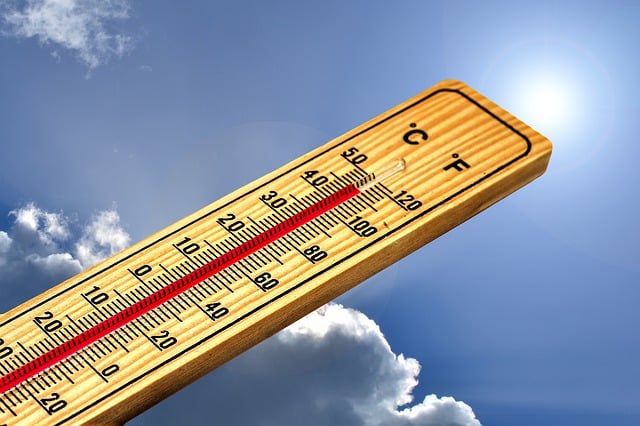Share This Article:

Washington, DC (WorkersCompensation.com) – On Tuesday, OSHA proposed a new rule outlining how employers should protect indoor and outdoor workers from the extreme heat conditions.
The proposed rule is the first major regulation aimed at preventing heat-related deaths on the job. If finalized, the rule would protect an estimated 35 million workers across the country.
“The purpose of this rule is simple. It is to significantly reduce the number of work-related deaths, injuries and illnesses suffered by workers who are exposed to excessive heat and exposed to these risks while simply doing their jobs,” a senior administration official said on a call with reporters. “Whether they are making deliveries, carrying mail all day, working construction, picking vegetables, repairing power lines, doing landscaping. It’s these things that put workers at risk.”
For the past two years, OSHA officials have been working on the proposed regulations. Public health officials, climate advocates and the Biden Administration have been asking OSHA for the regulations in light of several worker deaths over the past two years due to heat-related issues. And the proposal comes as summer heat continues to bake the country, and the hottest months of the year begin. Last week, more than 60 million Americans were under heat alerts, including excessive heat warnings over California and the Southeast.
Under the proposed rule, OSHA would adopt two heat index thresholds that would factor in humidity as well as temperature – one at 80 degrees, and one at 90 degrees. At the lower threshold, employers would be required to provide drinking water and break areas. Employers would also need to have a plan for new and returning workers to gradually increase their workloads to adjust to the heat.
At the higher temperatures, more protections would kick in, including monitoring for signs of heat illness and mandatory 15-minute breaks every two hours. Employers would also be required to check on workers every few hours and to issue a hazard alert to remind the workers to stay hydrated.
“Workers all over the country are passing out, suffering heat stroke and dying from heat exposure from just doing their jobs, and something must be done to protect them,” Doug Parker, assistant secretary for the Occupational Safety and Health Administration (OSHA), said in a statement on Tuesday. “Today’s proposal is an important next step in the process to receive public input to craft a ‘win-win’ final rule that protects workers while being practical and workable for employers,” Parker said.
Last year, more than 200 people died of heat-related causes, officials said.
Public Citizen has pushed for a national heat standard and said OSHA’s proposal is based on scientific research on how the body responds to heat. Juley Fulcher, a worker health advocate with Public Citizen, said the proposal also borrows from state workplace heat safety laws. As of last week, only five states have worker heat protections – California, Colorado, Minnesota, Oregon and Washington. In Maryland, a draft rule has been proposed, but has not been finalized.
Fulcher praised the proposed regulation.
“If you’re doing really heavy work, you’re generating a lot of internal heat in addition to that external heat,” she said. “You’re not going to be able to cool off at those temperatures.”
However, the rule doesn’t cover everyone. “Sedentary” employees are exempt from the protections and employees in indoor job sites kept below 80 degrees, emergency response workers and remote employees. And OSHA regulations do not extend to public employees so the proposed regulation will not apply to government workers and public school teachers, many of whom deal with increasingly high temperatures in school buildings without air conditioning.
Officials in the construction and home-building industries have asked for a special rule. In a letter to OSHA last week, the Construction Industry Safety Coalition wrote that “absent a withdrawal of the rulemaking in its entirety,” construction workers need their own rule.
“Construction work is simply too distinct from other general industries to be covered by the same rule," the letter said.
Other industries have pushed back against the rule’s acclimatization requirements. Some have even questioned whether the rule is even needed because so few workers have died from heat exposure.
According to the Bureau of Labor Statistics, from 1992 to 2019, there were an average of 32 heat-related workplace fatalities each year. In 2022, there were 43 heat-related deaths, up from 36 in 2021.
BLS officials said the number underestimate the scale of the problem due to underreporting and the difficulty of attributing a death to heat.
AI california case management case management focus claims compensability compliance courts covid do you know the rule emotions exclusive remedy florida FMLA fraud glossary check Healthcare health care hr homeroom insurance insurers iowa leadership medical NCCI new jersey new york ohio osha pennsylvania roadmap Safety state info technology texas violence WDYT what do you think women's history women's history month workcompcollege workers' comp 101 workers' recovery Workplace Safety Workplace Violence
Read Also
- Apr 24, 2025
- Frank Ferreri
- Apr 24, 2025
- Liz Carey
About The Author
About The Author
-
Liz Carey
Liz Carey has worked as a writer, reporter and editor for nearly 25 years. First, as an investigative reporter for Gannett and later as the Vice President of a local Chamber of Commerce, Carey has covered everything from local government to the statehouse to the aerospace industry. Her work as a reporter, as well as her work in the community, have led her to become an advocate for the working poor, as well as the small business owner.
Read More
- Apr 24, 2025
- Frank Ferreri
- Apr 24, 2025
- Liz Carey
- Apr 24, 2025
- Claire Muselman
- Apr 24, 2025
- Chris Parker
- Apr 24, 2025
- Anne Llewellyn
- Apr 23, 2025
- Claire Muselman




